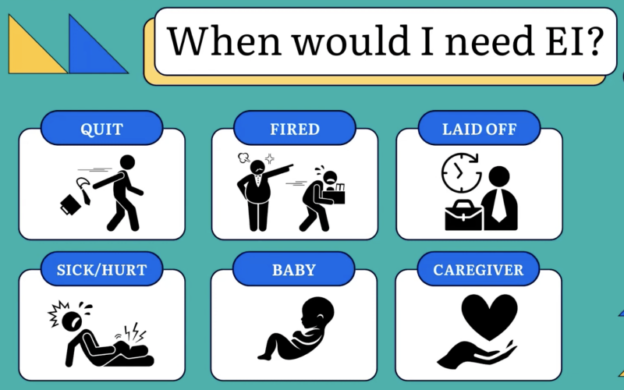No matter how it happens, losing your job is a miserable experience. It can leave you in shock, upset and extremely worried about the future. While it’s reasonable to give yourself a day or two to process what happened, there are some entitlements that you could lose out on if you wait too long.
Here are some things to consider if you recently lost your job:
1. Did you lose your job through no fault of your own?
If you lost your job through no fault of your own, i.e. due to restructuring at your workplace, your place of work shutting down, or because you were employed on a seasonal basis), you may be eligible for Employment Insurance.
Employment Insurance is a program that provides income to workers who have been without work of pay for at least 7 consecutive days. You must apply for Employment insurance (EI) within 4 weeks of being laid off, or you could lose your benefits.
If you need help applying for EI, and you were working in Alberta, you can get free assistance from the Workers Resource Centre.
If you lost your job due to your own misconduct, i.e. not showing up for your shifts, stealing from your employer, abusive behaviour towards co-workers, it is unlikely that you will be eligible for Employment Insurance. If you need help applying for other income support or connecting to community resources, the Workers’ Resource Centre can offer you free assistance.
2. Were you terminated after taking time off work?
In Alberta, there are a number of job-protected leaves that offer protections to workers who need to take time off work for various reasons, including:
- Long-term illness or injury
- Maternity and parental leave
- Personal and family responsibility
- Death of a family member or pregnancy loss
- Death or disappearance of a child
- Caring for a critically ill family member
- Domestic violence
- Covid-19 quarantine or vaccination
- Attending a citizenship ceremony
If you were fired after taking a job-protected leave, you may want to consider filing a complaint with Alberta Employment Standards. You can file the complaint yourself, hire a lawyer, or access free help from the Workers’ Resource Centre.
Please note: you only have 6 months from the time
3. Did you experience any form of discrimination on the job or while being terminated?
In Alberta, it is prohibited to discriminate against workers based on several protected grounds under the Alberta Human Rights Act. At work, you are protected from discrimination based on:
- Disability – either mental and physical
- Gender (including pregnancy and sexual harassment), gender identity and gender expression
- Sexual orientation
- Race and colour
- Ancestry and place of origin
- Religious beliefs
- Age
- Marital and family status
- Source of income (such as government assistance or disability pension)
If you feel that you have experienced discrimination at work, you have 12 months to file a human rights complaint with the Alberta Human Rights Commission, even if you no longer work there. The Workers’ Resource Centre offers free information and assistance concerning human rights complaints in Alberta. You may also wish to consult with a lawyer to access legal advice.
Losing your job is never easy, but it’s essential that you know your rights and act on them before it’s too late. If you’ve recently lost your job



